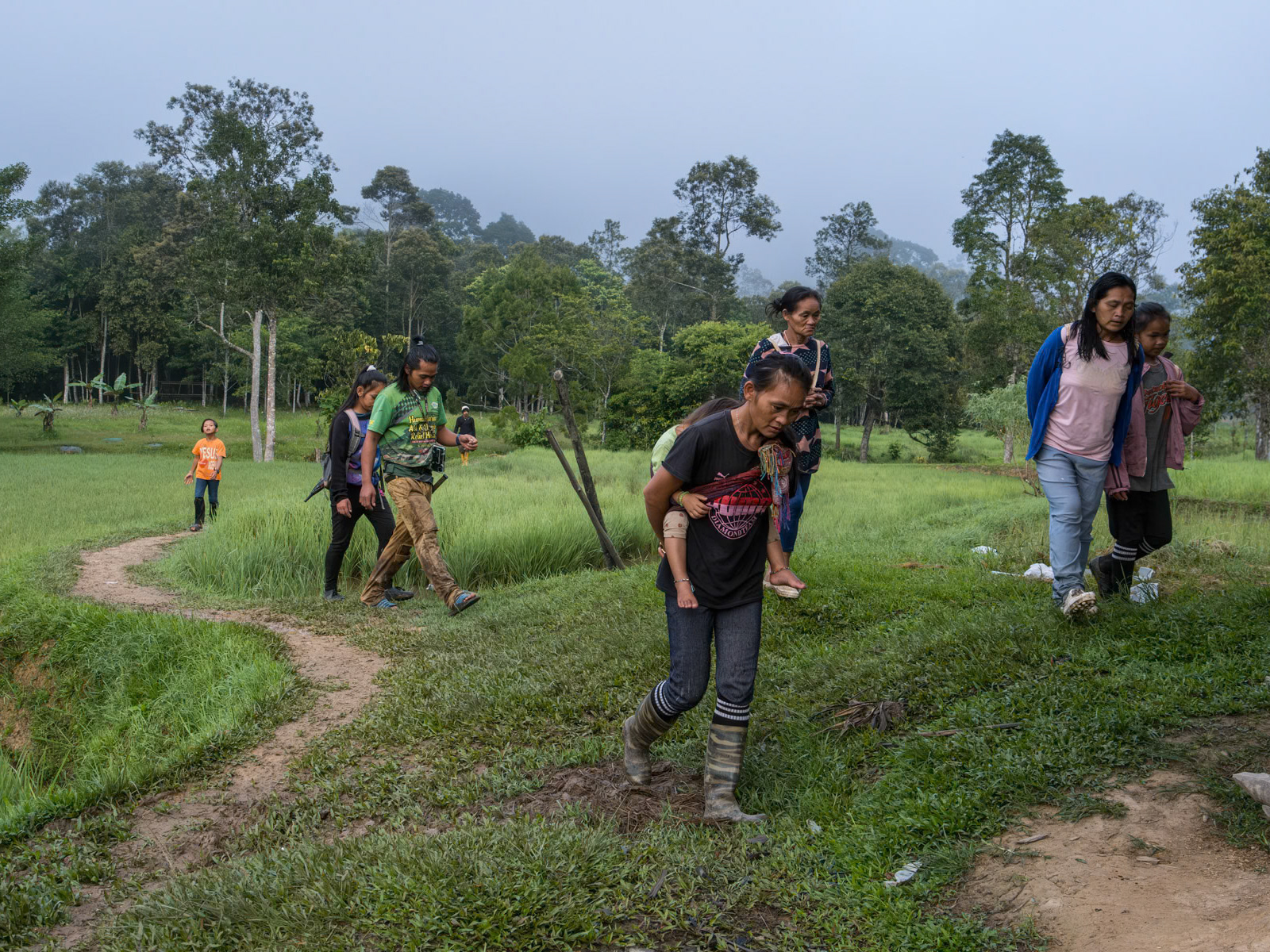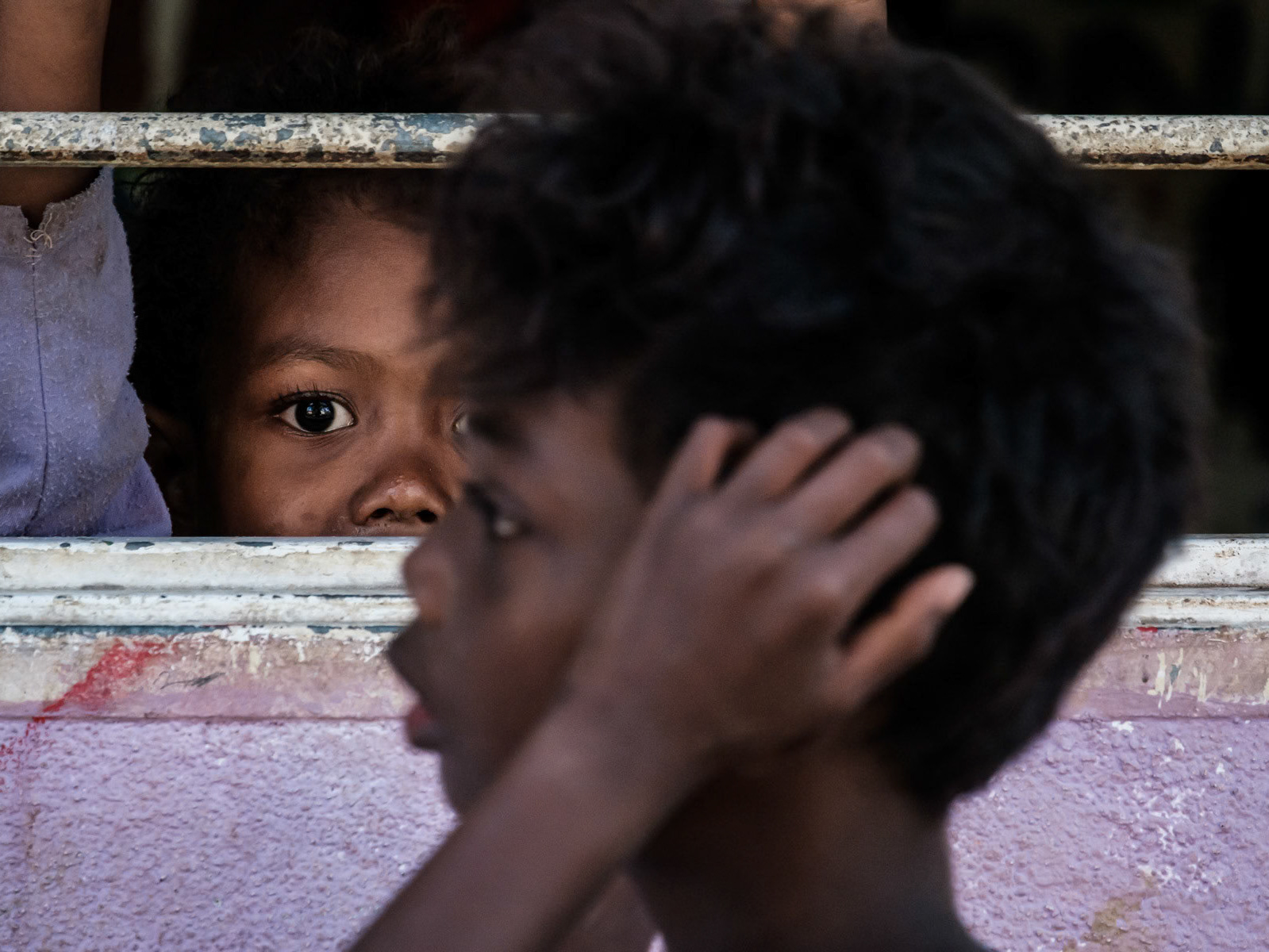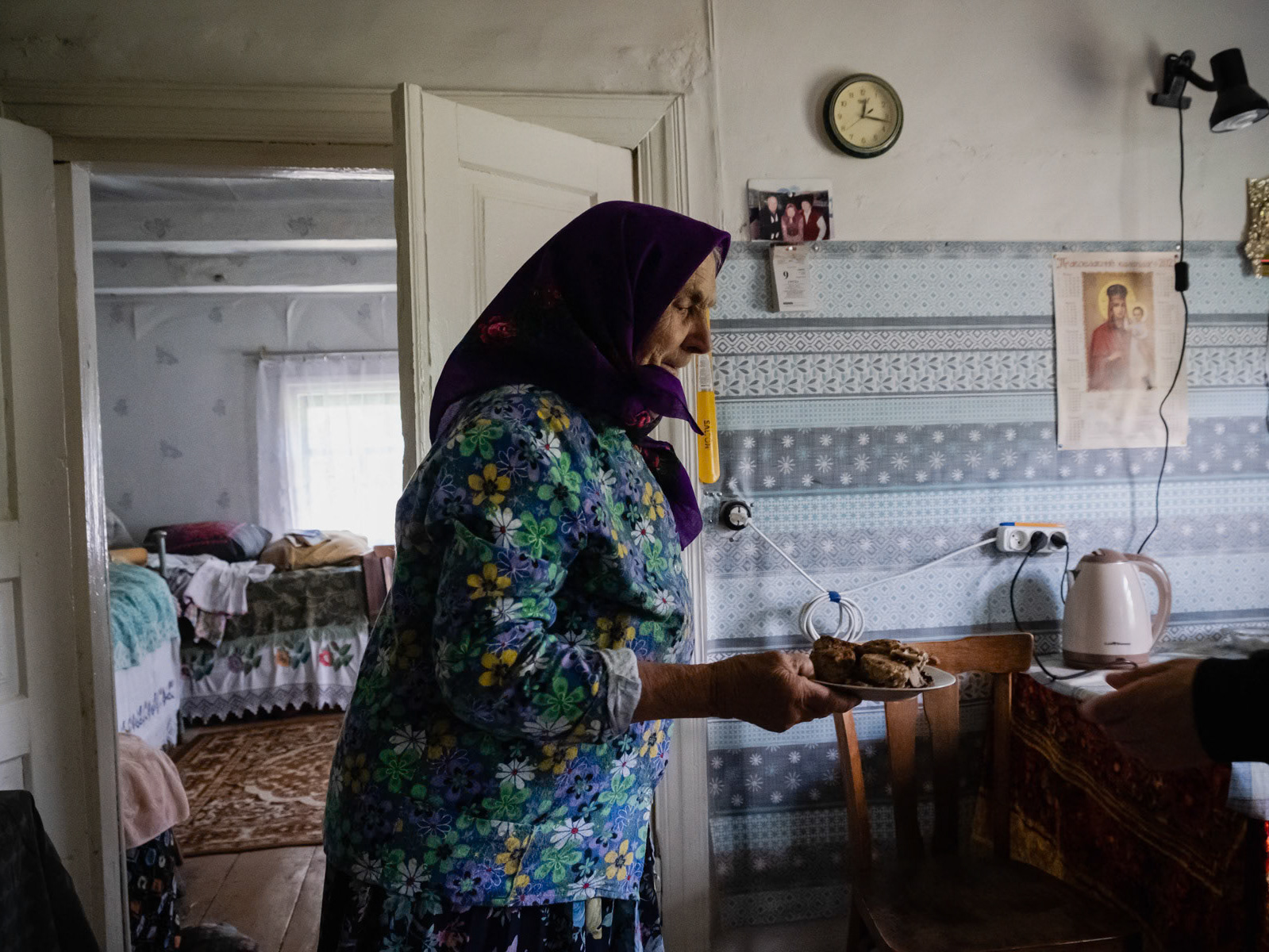The Amazonas Department in southern Colombia is the largest in the country by area, yet it has the third smallest population. This region is home to a vast majority of indigenous people who have lived in close harmony with the land for centuries. The area is largely unspoiled, remaining one of the most pristine parts of the Amazon rainforest, mainly due to its remote location. The lack of road connections to other parts of Colombia and neighboring countries such as Brazil and Peru has kept it largely inaccessible. This isolation has preserved its ecological and cultural integrity, making it a critical refuge for both biodiversity and indigenous communities.
Situated at the tri-junction of Colombia, Brazil, and Peru, Amazonas is only reachable by boat or air. This natural barrier has kept large-scale exploitation and industrialization at bay. As long as the region remains free from transnational roads and major infrastructure projects, it stands a chance to stay untouched by the forces of deforestation, mining, and commercial agriculture. For the indigenous populations, this isolation is essential for maintaining their traditional way of life, as they continue to thrive in an environment that has been largely shielded from the pressures of modern development.

The Amazonas Department in Southern Colombia is the largest in area while having the 3rd smallest population, but has a large majority of indigenous population This part of the Amazon is still pristine and not exploited, mainly due to the fact that no roads connect this region with the rest of the country or neighbouring countries. The region lays at the junction of Colombia, Brazil and Peru all only accessible by boat or air. As long as trans-national roads will not reach these regions, it has a chance to remain unspoiled and an area where indigenous and local populations can continue to live in full harmony with their environment. Flooded part of San Francisco village and its football pitch during the flooded season when water levels are up to 30m higher than during the dry season. Puerto Nariño, Amazonas, Colombia, April 2022

Señor Idalino in his home. He is the indigenous community leader of San Teresita, a remote village in the Amazonian district of Puerto Nariño in Southern Colombia, April 2022
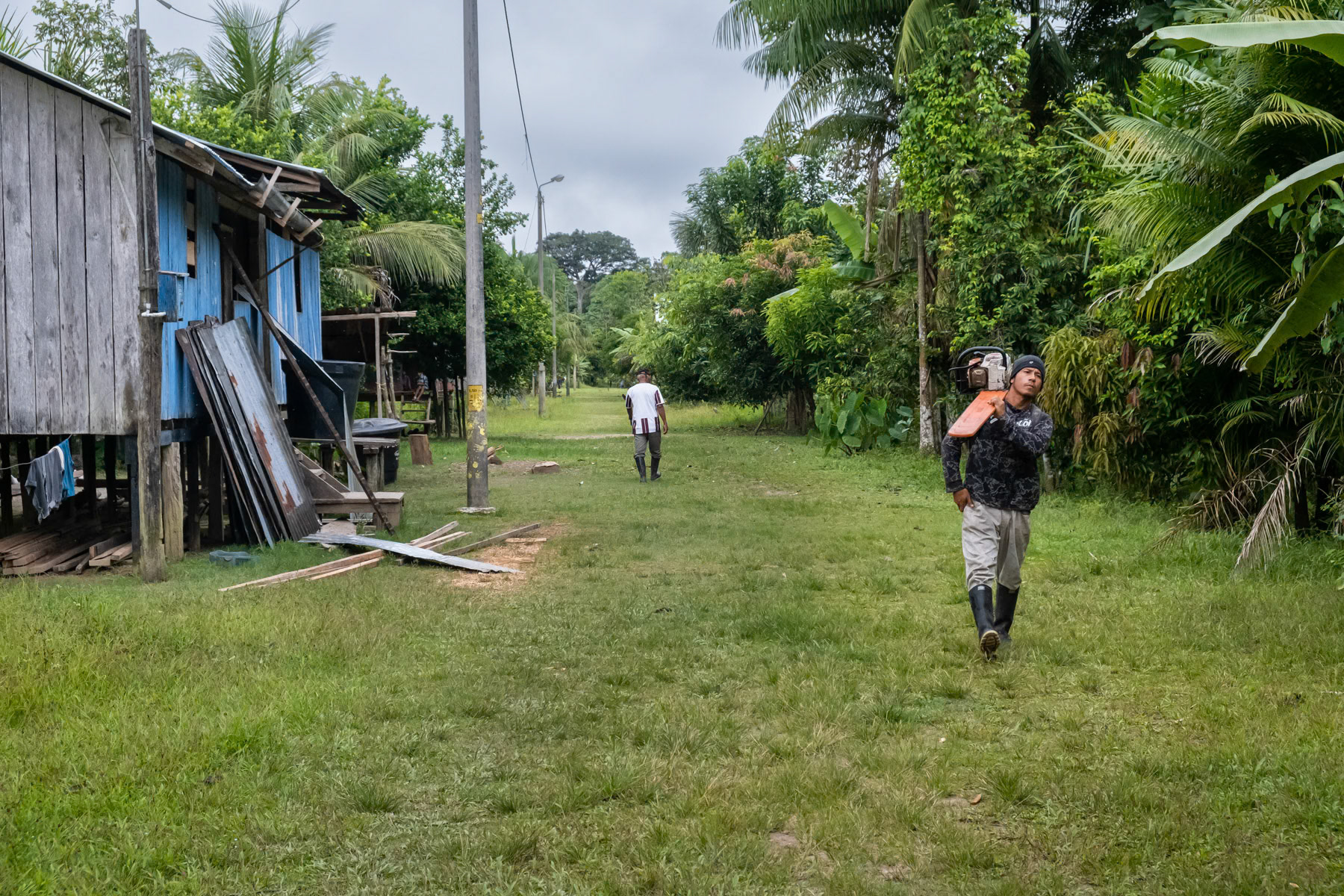
Amazonian indigenous community of San Antonio de Cacao, Peru, April 2022

Coca leaves being roasted before being mashed into a green powder. Coca is widly used by the indigenous people as a medecine and energy booster. Pocama, Amazonas, Colombia, April 2022

Afternoon rest in a small and remote indigenous community in the Amazon in southern Colombia. Pocama, Leticia, April 2022

Gilberto, 60 years, showing coca leave powder. Gilberto moved to this area of the rainforest 30 years ago from Putumayo, a region that was prone to violence during the conflict between the army and the FARC. The region of Leticia in the extreme south of Colombia has remained more or less peacefull during the civil war because it is remote and not accessible by road. Pocama, Leticia, Colombia, April 2022

Amazon river during the begining of high water season when part of the rainforest is flooded or 'floating'. Amazon crossing between Colombia and Peru, Amazonas, April 2022

Typical long house on pylons ready when water will reach the community during Amazonian high water season. Indigenous community of San Antonio de Cacao, Peru, April 2022

Indigenous family at home where 3 generations live together. Caseiro Paraiso community, Puerto Nariño, Colombia, April 2022

A little girl from the Ticuna community in her village of San Antonio de Cacao in the Amazonian part of Peru, April 2022

Branches of asai (amazonian fruit) that was collected from 10-15m high trees. Amazonian rainforest, Leticia, Colombia, April 2022

Collected Yuka which is a sort of manioc that will be cleaned and cooked to produce flour widly used as a base food throughout the Amazon. Pocama community in Casilla Nagra, Leticia, Amazonas, Colombia, April 2022

Jetty bridge connecting the village with the boat drop off place. The remote amazonian communties of southern Colombia are only accessible by boat. Being without roads makes the logistics more challanging but saves these areas of exploitation as is experienced downstream the Amazon in Brazil. San Francisco village, Puerto Nariño, Colombia, April 2022

Leo and his little brother playing near their house in the rain forest where they live with their parents and grand parents. Gilberto, their grandfather is indigenous and moved to this area of the rainforest 30 years ago from Putumayo, a region that was prone to violence during the conflict between the army and the FARC. The region of Leticia in the extreme south of Colombia has remained more or less peacefull during the civil war because it is remote and not accessible by road. Pocama, Leticia, Colombia, April 2022
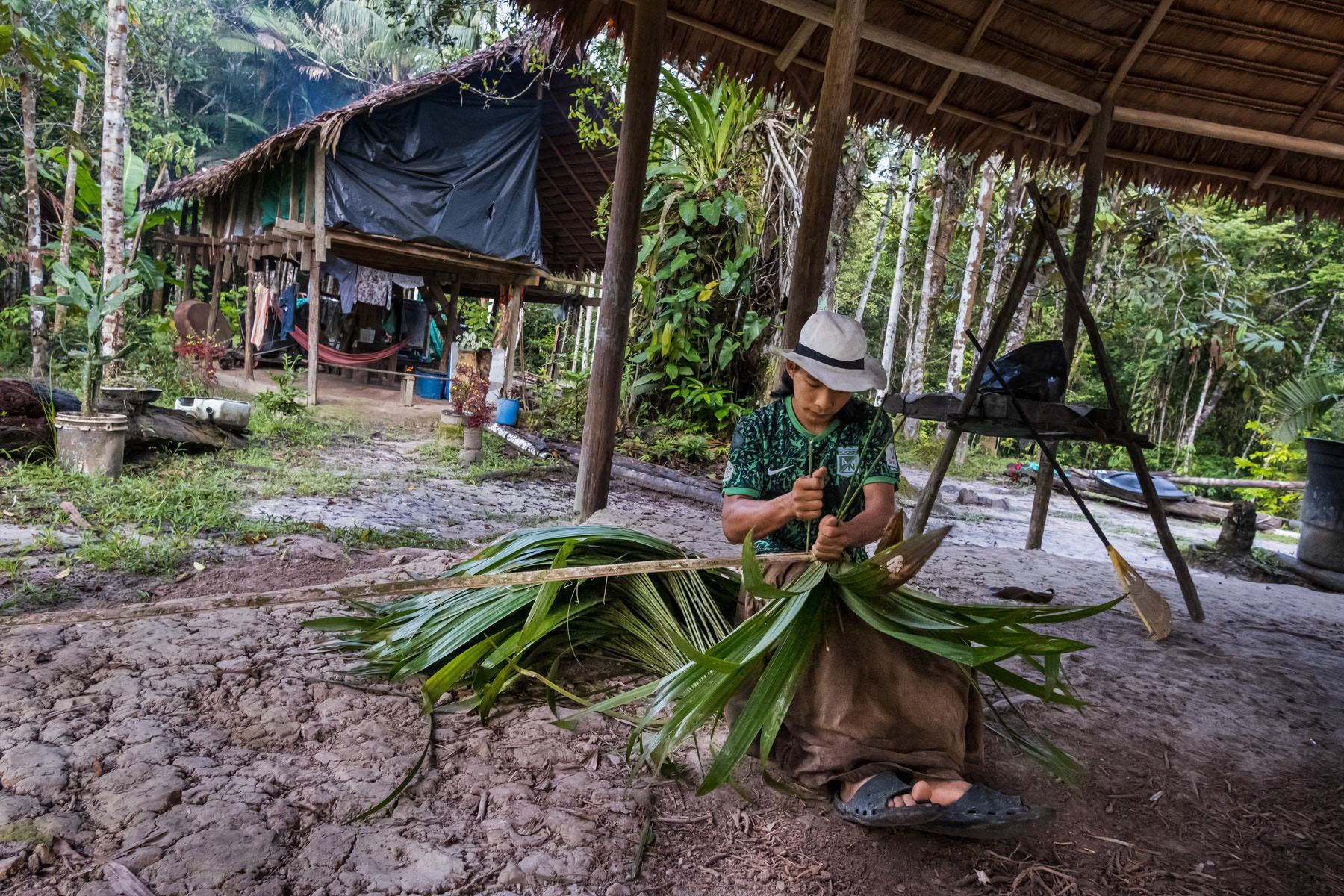
Weaving leaves that will be used as roofing for the dwellings. Indigenous protected land of Pocama near Leticia in southern Colombia, April 2022
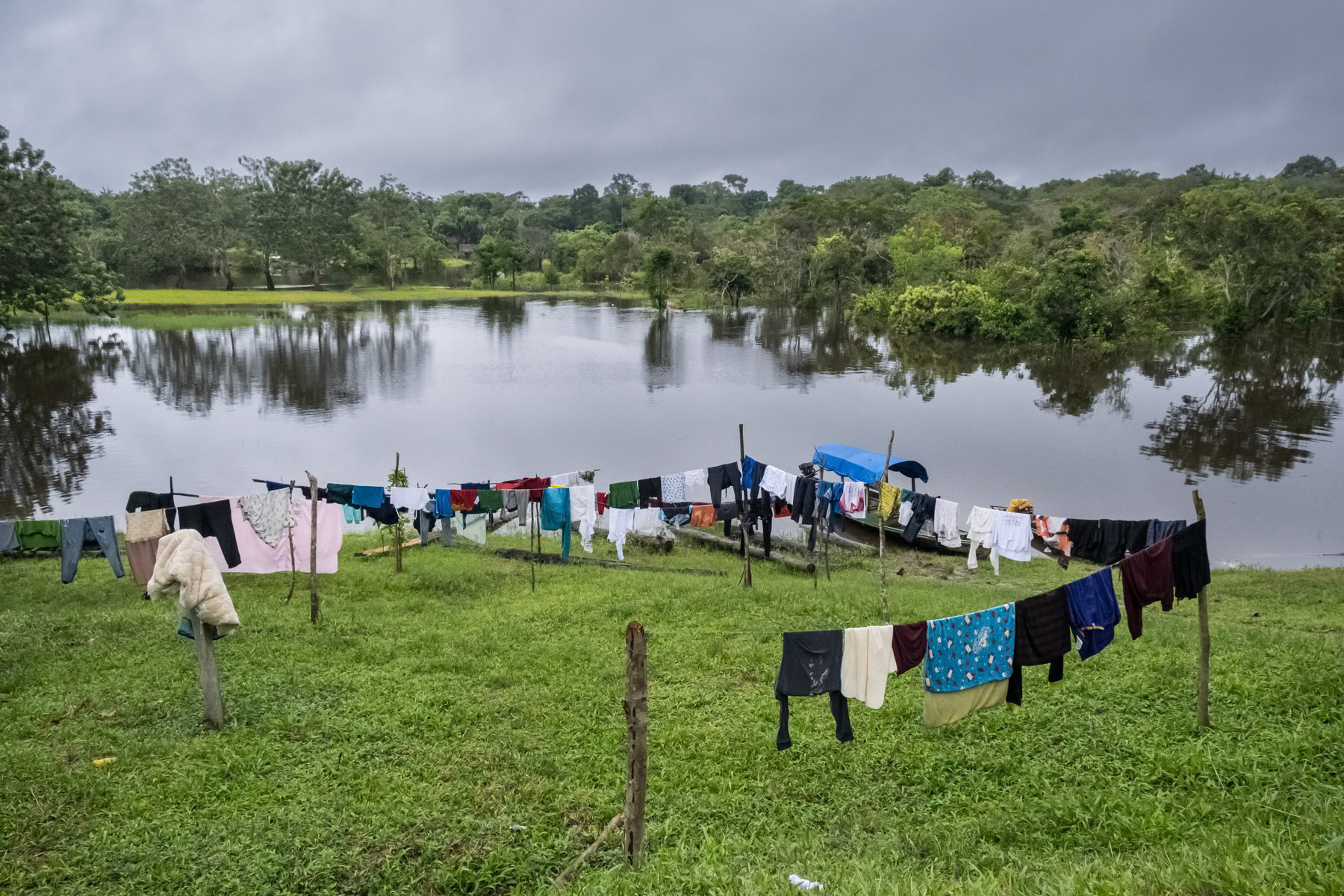
Caseiro Paraiso village in the indigenous protected lands of southern Colombia. Paraiso, Puerto Nariño, Amazonas, April 2022

Caseiro Paraiso village in the indigenous protected lands of southern Colombia. Paraiso, Puerto Nariño, Amazonas, April 2022

Leo, 9 years, inspects a tree before climbing 10-15m high to fetch asai, an amazonian fruit. Casilla Nagra, Leticia, Colombia, April 2022

Amazonian rainforest plot inhabited by indigenous people on protected lands. Pocama in the district of Leticia, Colombia, April 2022

Ms. Kande preparing food on firewood. The indigenous communities are living in remote areas of the amazonian rainforest where no electricity, water or phone signal is available. Everything is done in full harmony with their environment on a subsistance basis. Muruwi tribe, Pocama, Leticia, Colombia, April 2022
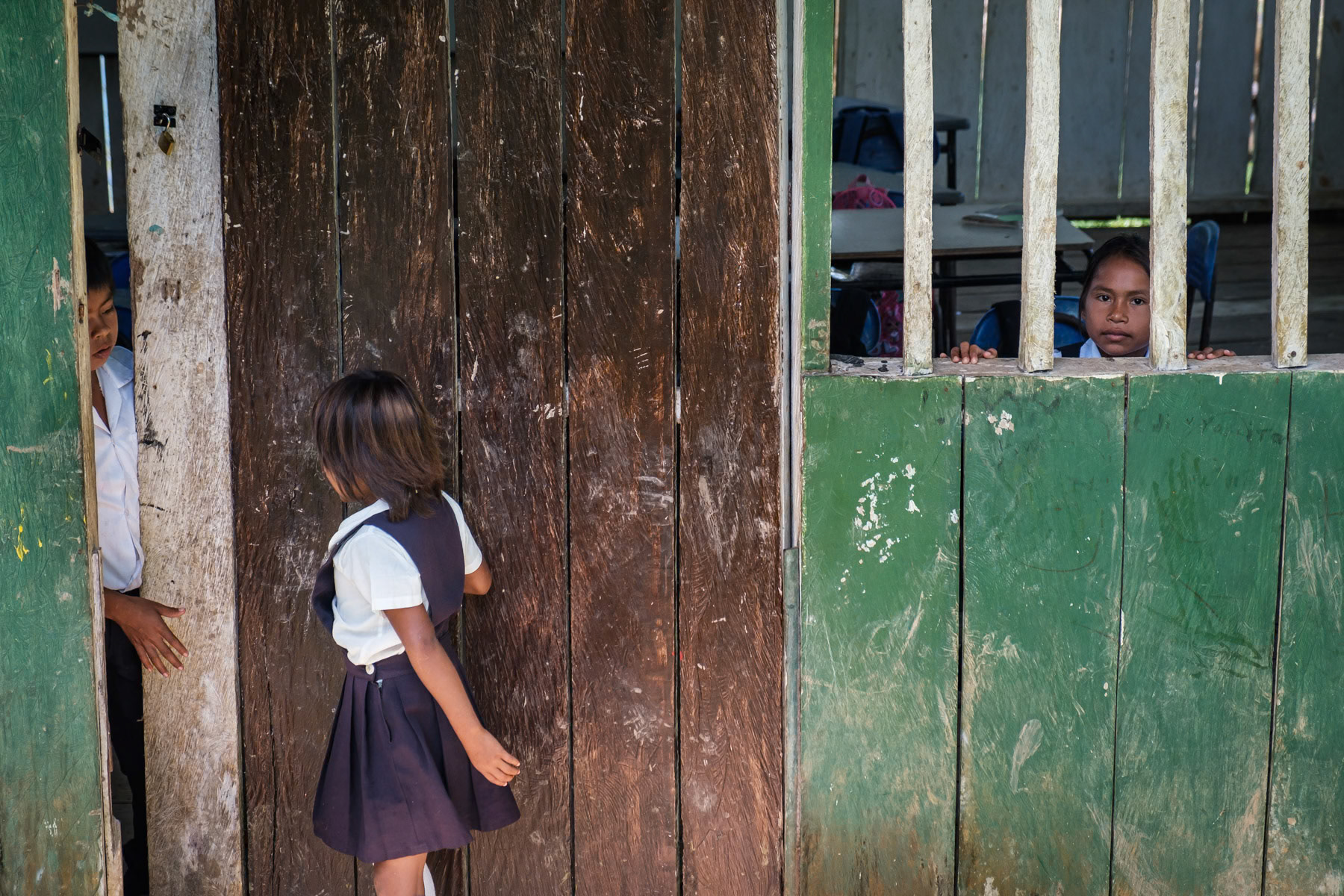
School in the remote indigenous community of Santa Teresita. The remote amazonian communties of southern Colombia are only accessible by boat. Being without roads makes the logistics more challanging but saves these areas of exploitation as is experienced downstream the Amazon in Brazil. Amazonas, Puerto Nariño, Colombia, April 2022

Spider web in the Amazonian rainforest of Southern Colombia. Casilla Nagra, Leticia, April 2022

A boy from the Ticuna indigenous community at his typical house on pylons. Indigenous community of San Antonio de Cacao, Peru, April 2022

Children from the Caseiro Paraiso community fishing during the flooded season when water levels are up to 30m higher than during the dry season. Paraiso, Puerto Nariño, Amazonas, Colombia, April 2022

Indigenous home interior in the village of Santa Teresita in the Colombian Amazon, April 2022

Flooded part of Santa Teresita village and its football pitch during the flooded season when water levels are up to 30m higher than during the dry season. Puerto Nariño, Amazonas, Colombia, April 2022

Puerto Nariño river side. The small town of Puerto Nariño along the Amazon river is only accissible by boat and is mainly populated by indigenous people living in perfect harmony with the Amazonian rainforest and its rivers. Puerto Nariño, Amazonas, Colombia, April 2022

Remote indigenous community of Santa Teresa de Tarpoto. The remote amazonian communties of southern Colombia are only accessible by boat. Being without roads makes the logistics more challanging but saves these areas of exploitation as is experienced downstream the Amazon in Brazil. Amazonas, Puerto Nariño, Colombia, April 2022

Señor Kande of the Muruwi indigenous community going to fetch coca leaves in the rainforest. Everything is done in full harmony with their environment on a subsistance basis. Muruwi tribe, Pocama, Leticia, Colombia, April 2022

Children of the indigenous Muruwi tribe playing in one of the traditional dwellings. Pocama, Leticia, Amazonas, Colombia, April 2022
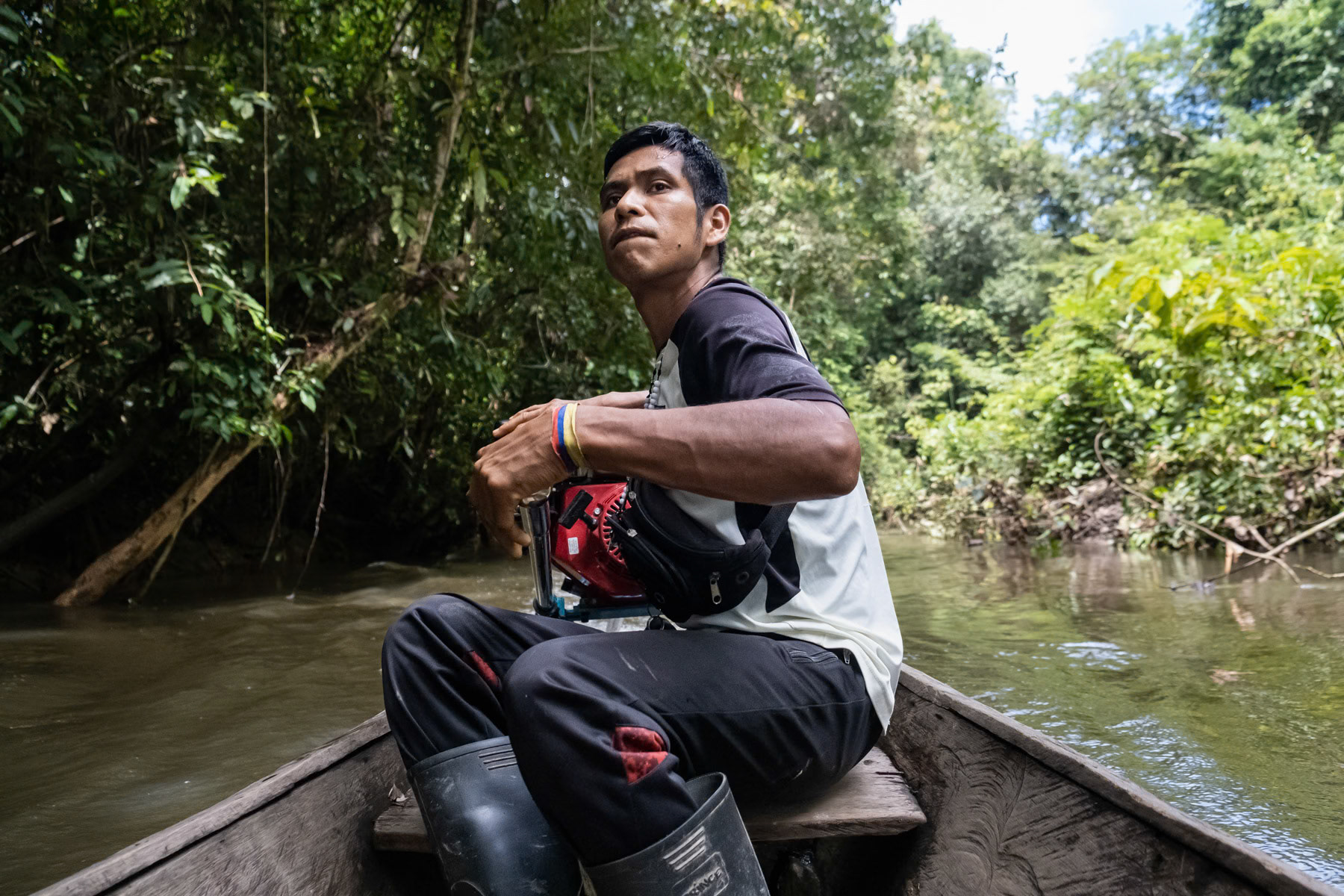
Boat transport between remote Amazonian communities as no roads exist. Despite the logistic and accessibility problems, their lands are better protected against external abuse and exploitation of the natural resources. Pocama community in Amazonian district of Letica in southern Colombia, April 2022

Indigenous child fetching drinking water in the Tacana river, an affluent of the Amazon river. A remote indigenous community in the Amazon in southern Colombia, April 2022

Indigenous children walking to school in a remote community in the Amazonian rainforest. By foot and/or boat are the only transportation available as no roads connect the communities. Despite the logistic and accessibility problems, their lands are better protected against external abuse and exploitation of the natural resources. Pocama community in Amazonian district of Letica in southern Colombia, April 2022

Leo , 9 years old, climbing in the trees using a rope around his feet to fetch fruit. Casilla Nagra, Leticia, Colombia, April 2022
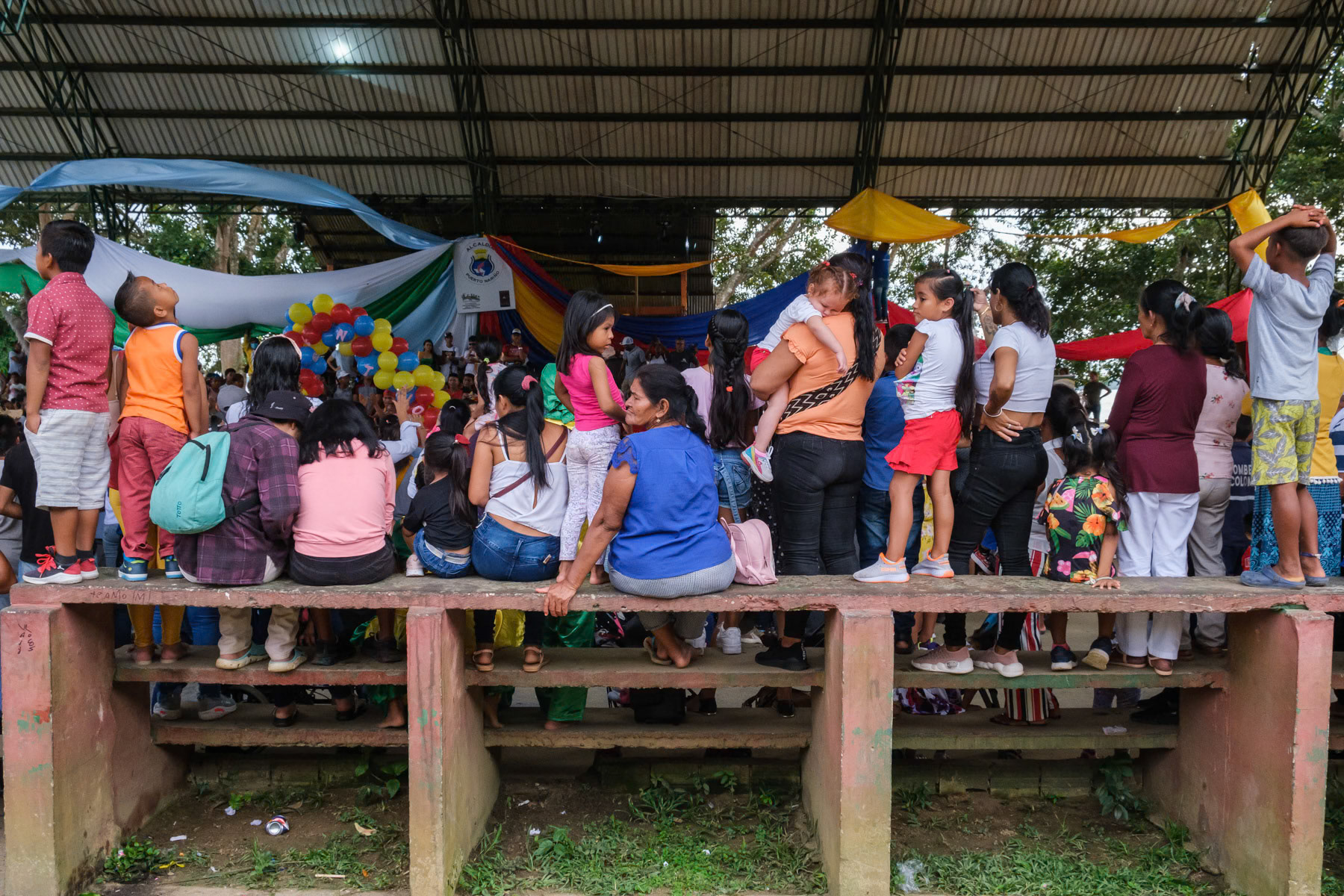
Anniversary celebration in small town of Puerto Nariño along the Amazon river. The town is only accessible by boat and is mainly populated by indigenous people living in perfect harmony with the Amazon rainforest and its rivers. Puerto Nariño, Amazonas, Colombia, April 2022

